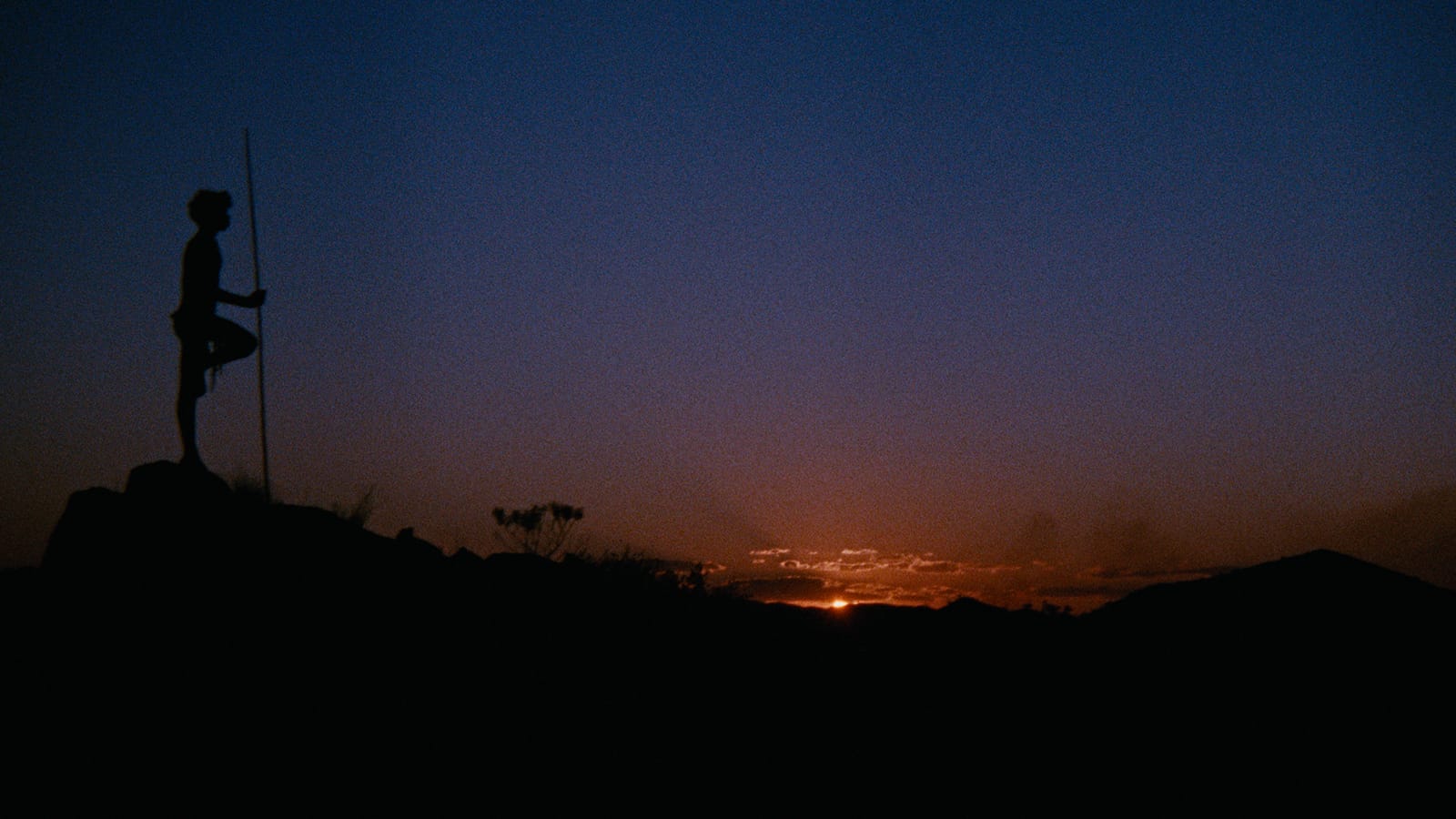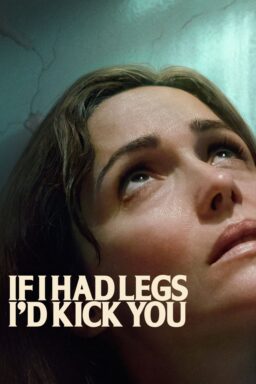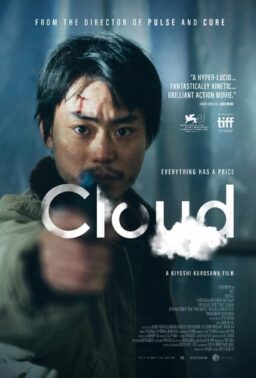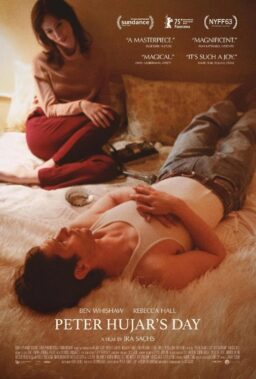After making his name as one of the great directors of photography, but an opinionated and some might say difficult one who, after catching David Lean’s eye as a second-unit cinematographer on “Lawrence of Arabia,” was hired and promptly fired as cinematographer for “Doctor Zhivago,” Nicolas Roeg found himself better-suited to the role of director. Once recast, he was free. His vision of a haunted, diaphanous world, sick with entropy and diseased with men blinded by their own will to reason, no longer needed to brook resistance from talents, however great (he shot for not only Lean but luminaries like François Truffaut and John Schlesinger), but given to perhaps more literal expressions of more quotidian ideas. Over the next thirty-seven years and across fourteen feature films, Roeg crafted as uncompromising and challenging a filmography as anyone ever has. Consider how the closest he came to producing the mainstream entertainment that is the gorgeously perverse and frankly terrifying adaptation of Roald Dahl’s “children’s” book The Witches. Where others would have been lost in the magic, Roeg was obsessed with its sex and its uncanniness.
His loose adaptation of another children’s book, James Vance Marshall’s (a pen name for British author David Gordon Payne) beloved young adult novel Walkabout, marked Roeg’s first solo effort as the author of his own picture. Released in 1971, it has lost none of its totemic power, its pervasive feeling of an almost Biblical sense of an innate and inherited spiritual horror. It is a pyre for paradises we have, by just the fact of our essential fallen states, irrevocably lost, and an excoriation of the masks of self-delusion we wear to mitigate our existential pain. The film ends with a sober recitation of the fortieth poem from A.E. Housman’s A Shropshire Lad anthology, a collection of poems written upon the death of Housman’s lover that gained popularity in England during the Boer and First World Wars when its themes of mourning and pastoral nostalgia echoed a nation’s grief-struck, shellshocked zeitgeist. It reads:
Into my heart an air that kills
From yon far country blows:
What are those blue remembered hills,
What spires, what farms are those?
That is the land of lost content,
I see it shining plain,
The happy highways where I went
And cannot come again.

Roeg runs images counter to the sadness of the poem from an idyllic day. The three children at the center of his film, an unnamed Girl (Jenny Agutter), her little brother White Boy (Luc Roeg), and their eventual savior-for-a-while, a teen Aboriginal person, “Black Boy” (David Gulpili), spend swimming in an Outback billabong. Unconcerned, uninhibited though not entirely untainted by knowledge of one another’s nakedness, the obvious read of “Walkabout” is that it’s a prelapsarian fantasy in which a certain “noble savage” inclination positions Nature as innocent and Civilization as corrupt. It’s a read bolstered by the use of Housman’s poem, which, after all, sang most loudly to a generation of Brits reeling from the devastation of war. But I think it’s thornier than that, though the specifics of its philosophy don’t come clear without the evidence of the rest of Roeg’s films that are, at this moment, still to come. If this is your first Nicolas Roeg film, in other words, it will be as mysterious and profane as Peter Weir’s “The Last Wave” and “Picnic at Hanging Rock,” two pictures that defined the Australian New Wave with its fascination with/revulsion of a land they had colonized but not conquered – that was ever in the process of pushing back against its occupiers with the uncontrollable insinuation of its essential wildness. Roeg isn’t Australian, though; his hangups are his own and not in time with any “wave.”

Indeed, some of the most indelible images of “Walkabout” are set in the zone between the groomed concrete of modern Adelaide and the treacherous splendor of the Outback that surrounds it. Here, rusted metal husks and houses in the active process of being reclaimed by vegetation and the elements show the immediate fate of cities when they’re uncultivated by human hands. This interzone forms a ring around the city like an asteroid belt around a planet, the last remnants of a satellite moon serving as a reminder of the temporariness of any attempt to impose right angles on a round world. Roeg takes us through these spaces and then into the wild when Girl and White Boy, 16 and 8, are taken for a picnic by their severe, distant Father (John Meillon). As Girl lays out their lunch to the tune of Rod Stewart’s “Gasoline Alley,” blaring tinnily from her little transistor radio, their father reads what look to be mineral density charts covering the surrounding area. Is he a geologist? seismologist? In a lesser film, he’d explicitly be an executive for an oil company interested in despoiling the natural wonder of this place with derricks and quarries, but in “Walkabout,” he’s regarding the physical composition of the land with the kind of consternation I relate to doomed generals on the eve of disastrous battles, looking over troop reports and calculating his prospects of seeing another sunset. He takes out a pistol and starts shooting at his children before setting the car on fire and killing himself. I think he’s doing it for their own good. I think he thinks so, anyway. Why postpone the inevitable?
Girl, showing resourcefulness by immediately recognizing their peril and shepherding her brother to safety, takes them both deeper into the bush. She’s going to walk to Adelaide, but she has no idea what direction it is nor how to survive for very long in this alien landscape. “We’re British,” she protests. What’s saved her is how she recognizes how her father has become uncomfortable with her budding sexuality. It made her wary before the bullets flew. Roeg insinuates ourselves in Father’s attention, the surreptitious glances at bare legs and unconscious flashes of a girl, still largely unguarded in her dad’s company, only half-wise to the potential dangers of the company of all men. Roeg’s cinema is, at a certain level, obsessively, illicitly erotic. Sex is simultaneously custom and instinct: the antic motion of the body fetishized by the interference of the mind. In the act of it, it is the absence of artifice yet, in the anticipation of it before and the consideration of it after larded with pretense and ritual. When Girl empties the car’s boot for the picnic at the beginning, Roeg invites us to look at her lasciviously and then shows the father looking out the windshield. He can’t see her from behind the hood, of course, but the way Roeg composes this series of images, we identify with his point of view and transpose our guilty interest into his. It feels bad, and for its impossibility, it feels weird, too. Better than a consideration of “Walkabout” as an idealization of Nature is an interpretation that sees it as a cautionary tale about what happens to an animal when it denies that it is one: of a shaved ape in clothes deluding itself so it can deny that its sober sentience is helpless before its hunger and intuition.

Roeg’s films are littered with men who deny their natures to their detriment. John, the architect/skeptic of “Don’t Look Now,” who sees his own death just as he saw his daughter’s but refuses to heed the visions that would save him because they are products of illogic, the sad alien of “The Man Who Fell to Earth” who forgets the thirst that brought him to this planet when stuffed full of the distractions and comforts the fruits of his desperation have bought him. In “Walkabout,” Girl and White Boy are going to die when they stumble, entirely by accident, upon an oasis, a watering hole where there couldn’t be one that Girl, in her delirium, tries to blink away so the hope of it doesn’t drive her mad. But it’s real. They swim and drink, and because she is what she believes she is, Girl washes her clothes and shoes but doesn’t fill a scavenged bottle with water nor fill their pockets with the red fruit from the tree shading them from the brutal sun. They sleep and wake to find the hole has dried, the fruit eaten by wildlife or half-rotten already at the mandibles of insects and in the day’s heat. The little boy asks why his sister hasn’t filled their bottle, and as an answer, she looks at him blankly. In the book, the First Nations boy has brought them to the watering hole. there is no lecherous father and suicide but a plane crash instead, and we know the boy has already been infected with a flu against which he has no natural defense. The book is a story of colonialism, a heroic tragedy in which a minority preserves white order. The film is no such thing.
The boy does find them at the watering hole. We presume he is on a “walkabout,” an Aboriginal ritual outlined by a title card at film’s opening detailing how he is sent into the Outback for six months to survive on his own as part of a boy’s coming of age. Not just a test of survival, I think, but a catalyst for self-discovery that is perhaps an analogue to the Native American “vision quest” or the Amish “rumspringa.” I wonder, though, if the real “walkabout” is the one the viewer takes during the course of this film as we are invited to be the voyeur in what we hope is the deflowering of a beautiful young woman at the hands of a beautiful young man. (Especially as the studio inserted the definition at the beginning, not Roeg.) Roeg drowns us in romantic sickness the way the netted ortolans are drowned in cognac in the preparation Girl, and White Boy’s distracted mother (reduced to function and credited as Father’s Wife, Hilary Bamberger) listens to on the radio in their apartment back in the city. The birds are kept in the dark and tricked into gorging themselves on grain to twice their natural size. Drowned in alcohol, they’re roasted and eaten feet-first save the beak which is used as a handle. And so the audience for Roeg’s films are pushed into the metaphorical dark, fed to overfull while defenses are defeated, then drowned in sweet nepenthe to cushion our consumptive fates, returned to the food chain as soil and cautionary grist for metaphorical mills. The first time we see Girl, she’s repeating vowel sounds in a group with her classmates as Roeg inserts noises of industrial machinery beneath them. Her gasping mouth reminds me of a bird eating … or drowning.

“Walkabout” is about seeing things unadorned by idealism. Watch how its characters see. Watch how Roeg will cut on a look in a series of step edits, closer and closer into the little details easily missed. Its shots of animals and the landscape are overwhelming for their rawness. It’s not beautiful because that implies affectation. Rather, it’s awe-inspiring because it’s inexplicable. Black Boy’s appearance isn’t an act of supernatural providence, it just is. The fact of him in the film was the same kind of providential miracle: an Aboriginal man who is powerful and sexy? A brief moment where Girl glances at Black Boy’s codpiece lands like a the first horn blast of a revolution. Her desire is still taboo even if it’s no longer illegal. He leads them towards Adelaide, hunting in a few graphic sequences that are always supported by the prey animals dressed and roasted, knowing where to poke shunts into the ground to find water, knowing too how to procure natural remedies for sunburn and even the ill-effects of menstruation. In a scene of leisure that becomes laden with the first pangs of sexual longing, the three climb a tree that has branched in such a way as to suggest long, white legs and a cleft between. When Girl realizes she’s been bruised from the play, Roeg offers an intellectual montage of the suggestiveness of the tree’s form with Girl’s just as, immediately before, he’s interposed them at play with a First Nations family discovering the burnt-out husk of Father’s car and how they clamber around it in the same way. Perhaps Roeg is remarking about how industrialization has replaced trees with derelict machines, but I think he’s suggesting that no matter the miracles we forge from the ground, our reactions to it will always tend to the same sort of play. We’re animals, and it’s best not to forget it. Girl and Black Boy, sore from tumbling through an anthropomorphized tree, have reenacted the Biblical story about the Tree of Knowledge and the creation of shame.
In the book, the white flu claims the boy, but not before he’s pointed the white heroes to a valley rich with food and civilization beyond it. In the film, he witnesses white hunters decimating the wildlife with no sense of the preciousness or dignity of it as a resource. Then he lies in a field of bleached bones, smearing himself in white paint to approximate the shocking waste, yes, but more the insupportable arrogance of the whites. It’s not the first time Roeg portrays the settlers as savages playing the role of masters of the unmasterable. An extended interlude earlier in the film finds a group of male scientists on an Australian beach angling to catch a better glimpse up the skirt or down the blouse of their only female member like a pack of baboons sniffing around an unattached female in estrous. Their occupation is science, but their all-consuming preoccupation is sex. This is Roeg in precis. For the lost children and their guide, in contrast, they are learning how to be honest. When they return to the outskirts of civilization, the boy sees what he sees, the hunting and the houses fallen to decay and forgetfulness, and paints himself as a skeleton to dance for Girl in the costume of a man stripped of flesh – of all pretense. For her part, the Girl is still shaken by an old photo album she’s found, grieving the lives she sees there and, in the grieving, betraying a longing to live in the traditions of her culture. The film doesn’t mention it, but we know that in Aboriginal culture, the invocation of dead ancestors through writing or speech, not to mention photographs, is forbidden because it summons their spirits back to this mortal coil. This is bad. Death is natural and should be honored. Girl learns a different lesson.

It’s been read, this sequence, as the boy offering himself to the girl in a kind of ritualized courtship, and that may be, but I think it’s a warning and a plea that there is no dignified death in places where men are so disconnected from life. Maybe he wants to rescue her to the wild. The city is a denial that things fall apart. The city is a lie that things are eternal. His warning unheeded, he kills himself and, in the last moments of the film shot at some unspecified and unimportant point in the future, Girl, now grown and married (we can tell by the ring on her finger and how she’s chopping meat for dinner – an image cut with a shot of the boy throwing a kangaroo tail onto the fire) welcomes her unspectacular husband (John Illingsworth) home with a kiss and then retreats into her memories of one unguarded day in a billabong as he launches into a long tale of his day at the office. “What’s the matter?” he asks when he notices at last her face unguarded and still. “Nothing,” she says, readjusting the mask she wears for him. It occurs to me now how this is the apartment where she was a child, or near enough to it for there to not be much of a difference, and how the arrangement of its windows makes it look like a glass terrarium. A carefully managed prison where people divorced from nature keep things that used to be wild and are now just waiting to die.
Criterion presents “Walkabout” on a searing 4K UHD release packed with the exceptional, previously-released Blu-ray presentation and all of its special features. The new transfer gives the impression that we could count every blade of scrub grass on the blasted plain without it betraying digital amplification defects. It looks like a fresh 35mm print. It’s astonishing enough that even in scenes where I usually look away, I found myself transfixed. The audio mix is similarly overwhelming, uncompressed as it is so that John Barry’s almost-experimental score, full of animal scuttlings and cries, conveys nature’s heat and omnipresence with astounding immediacy. Glorious. A commentary track recorded in 1996 featuring Roeg and Agutter, separately, alas, proves to be packed with insight and recollection. Roeg talks about shooting day-for-night, about his affection for walls and windows for their architectural disconnection, and how he tries to find that “artificiality” even in all-natural environments. He says he looks for that in his films, those places outside of man that suggest the patterns emulated by men. He recollects working with Truffaut and Lean, with the young cast including his son, and his admiration of Gulpili as an effortless, entirely unselfconscious performer. For her part, Agutter charms with her intelligence and sensitivity. “Oh dear, this is a terribly violent scene,” she says at a couple of points. She exudes decency. Her memory of the “set up and slow immersion” mirrors the kids’ connection with the dessert. All-in-all, an invaluable contribution to the scholarship around this film.
Switch to the Blu-ray to find the other special features included in this presentation, starting with a short feature with Luc Roeg (9 min) that has the actor, now-producer, offering his memories of working with his dad and what seems a timeless love for the experience and especially Gulpili. He notes how his dad, not an Australian, of course, captured the essence of the place in much the same way he’ll later capture the darker peculiarities of Venice in “Don’t Look Now.” He talks about moving to Australia during the months of preparation, of how his originally cast older brother aged out of the role during the process, and how Jenny Agutter is just one of the most gorgeous human beings that there ever was. A 2008 interview with Agutter (20 min) is a French production that finds the eternally magnetic actor noting the importance of this film for her career and remembering with photographic precision how she came to the film through her ballet dancing, another film, and a shared family acquaintance. Decades later, she’s still overwhelmed by Roeg’s passion for the project and how, upon their first meeting, he told her he was going to make this camera even if he had to sell all his possessions and shoot with a small handheld camera. She has only effusive things to say about Gulpili as well, noting he was primarily a dancer and suddenly, it falls into place why these two people fell so easily into rhythm with one another. Finally, “Gulpili: One Red Blood” (56 min) is a documentary/ethnography/autobiography of Gulpili’s life is a lovely piece following a few days in the life as clips from the actor’s films are replayed and remembered. It has its share of revelations, including Gulpili’s hard realization that there was no great call for a First Nations actor. Paul Ryan’s brilliant, incisive article about “Walkabout” is included as the booklet for the presentation: not only the single best thing ever written about the film, but among the finest bits of film inquiry I’ve ever read.












